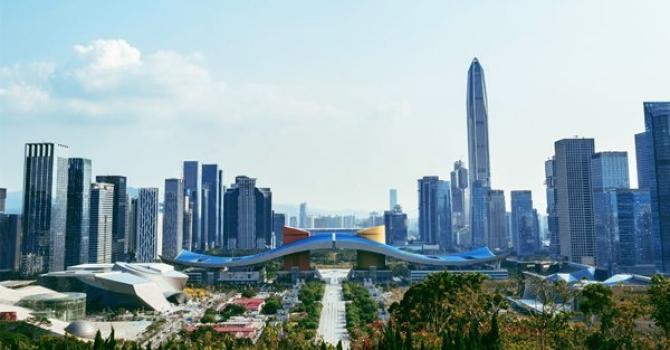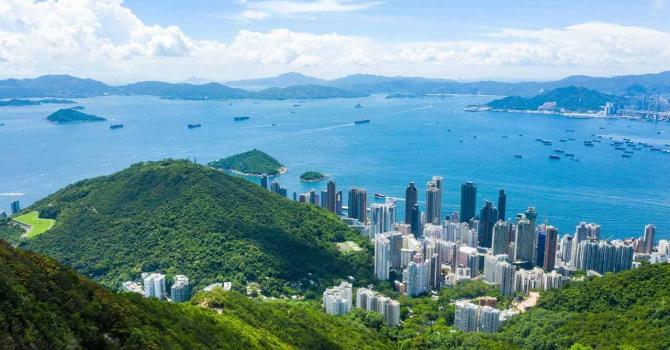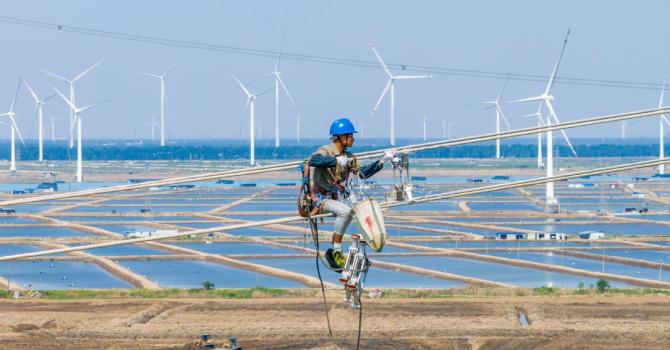Donald Trump’s return: gloves off reset
Donald Trump’s return to power for a second term has sent ripples across the globe. On his first day in office, he wielded executive authority with vigour, signing many executive orders, including withdrawing the US from the Paris Agreement for the second time. This move reversed the country’s climate commitments yet again, signalling Trump’s prioritisation of energy dominance and domestic interests.
While opinions about Trump’s leadership vary sharply, one fact is indisputable: he is the president of a country whose vast wealth and historical role as the world’s hegemon – with unrivalled dominance – makes its actions pivotal in shaping global norms and policies. Yet questions about America’s continued supremacy grow louder, fuelled by the meteoric rise of China as a formidable global power.
China has transformed itself into the world’s largest manufacturing economy, outstripping Western nations in industrial capacity. Despite its rising economic clout, the US remains enormously wealthy, with the dollar continuing its privilege as the world’s default reserve currency – a testament to its enduring economic influence despite mounting national debt.
In a striking acknowledgment of China’s importance, Trump reached out to Xi Jinping, his Chinese counterpart, three days before his inauguration for a phone call. This unusual overture signalled the recognition of a formidable peer competitor. Despite years of trade tariffs under Trump’s first term, continued during the Biden administration, China’s resilience has defied Western narratives of its imminent “fall.”
The cordial phone call between Trump and Xi highlights the beginning of a delicate balancing act in a world increasingly shaped by two superpowers. However, as the US and China engage in this precarious dance, the role of America’s traditional allies – Canada, Europe, Australia, Japan, and others – has grown increasingly complex.
Trump’s “America First” principle, which prioritises US interests above all else, often leaves these allies feeling like mere supplicants. Should they continue as steadfast partners, adapting to America’s demands, or seek greater independence in crafting their foreign and economic policies? At the same time, aligning with China remains a fraught prospect for these nations, given cultural and political differences and the West’s consistent demonisation of China as the “other.”
The global geopolitical landscape is indeed in flux. Trump’s provocative declarations, suggesting purchasing Greenland from Denmark, hinting at reclaiming the Panama Canal from Panama, and disparaging Canada by suggesting it might fare better as America’s 51st state, have drawn sharp international reactions. Yet these remarks, though outlandish, reflect a deliberate strategy to halt America’s perceived decline by securing resources of value.
Trump’s policies reveal a focus on dominating energy supplies and natural resources. From his “drill baby drill” encouragement to Big Oil to his interest in Greenland’s resources and the renaming of the Gulf of Mexico to the “Gulf of America,” Trump’s administration underscores the importance of energy dominance. If the US continues as the world’s major supplier of oil and gas, it can sustain investor confidence and maintain its ability to print money – essential to addressing its enormous debt.
Meanwhile, the US must contend with Middle Eastern oil producers. Trump’s suggestion for the European Union to replace Russian energy with American oil and gas aligns with his vision of using energy as a geopolitical tool.
Russia has survived American and European sanctions by redirecting its energy exports to Asia, with China emerging as its largest buyer. As energy security remains paramount, fossil fuels will likely dominate the geopolitical landscape for the foreseeable future, making the transition to clean energy a long and complex process.
China, too, prioritises energy security. It is not yet ready to ramp down coal production domestically while expanding renewable energy through massive investments in solar, wind, hydro, and nuclear power. It is also a leader in alternative energy technologies like hydrogen, methanol, and ammonia.
At the same time, China has flexed its growing military might, unveiling stealth tech fighter jets in recent weeks, a move widely interpreted as a direct message to the US to stay out of its sphere of influence in the South China Sea, as well as over Taiwan – a part of the nation which Beijing expects to bring back into the fold at some stage.
Beijing’s close ties with Moscow further underscore the shifting global power structure. Just hours after Trump’s inauguration, Xi and Russian President Vladimir Putin held a video call to discuss their shared vision of a “just world order,” challenging the US’s historical hegemonic dominance.
Putin, painted as a pariah by the West after Russia’s invasion of Ukraine, complicates Europe’s ability to rebuild relations with its large, resource-rich neighbour. Efforts at peace talks with Moscow faltered due to the UK’s intervention to dissuade Ukraine from agreeing to a deal in April 2022, deepened animosity and prolonging the conflict. For years, affordable Russian oil and gas fuelled Europe’s growth, but the switch to more expensive energy sources further away, including from America, has left economies like Germany struggling.
The world now stands at the crossroads of a new era, where the balance of power is increasingly contested. Asia, Africa, and South America watch with bated breath. The age-old Chinese proverb, “Two tigers cannot share one mountain,” aptly describes the evolving bipolar dynamics of US-China relations. How might their relationship evolve, and what will be the consequences for the rest of the world?
As Trump reveals America’s strategy, China’s defensive and offensive manoeuvres are becoming equally apparent. Energy security lies at the core for both nations. The Russo-Sino oil and gas deals forged since 2022 are vital for both countries, ensuring a reliable source of supply for China while providing Russia with a large export market. Expanding domestic consumption to sustain GDP growth, targeted at 5 percent annually, remains crucial for China.
While America makes its “America First” policy explicit, China champions its vision of a “community of shared future for mankind,” emphasising global interconnectedness, mutual benefit, and collective progress which is proving to be attractive to the Global South.
Might the US ease its hardline approach to China in order not to upset the geopolitical boat totally? Yes and No. While Trump says the US and China “will solve many problems together, and starting immediately,” he then threatened a few days later to imposing an additional 10 percent tariff on imports from China, which could come into force as soon as February 1.
Beijing has prepared itself to navigate the unpredictability of an ever-changing US administration. Under Trump-style leadership, his appointees will act as aggressive front-line attack dogs, while the president retains the flexibility to step in at any moment to de-escalate tensions and propose deals, when they can’t get what they want. Beijing employs a highly calculated strategy, targeting painful pressure points, such as banning critical minerals to the US, while leveraging its extensive arsenal of economic and financial tools to sustain its domestic economy and counter external pressures.
The world remains riveted. While US allies grapple with navigating Trump’s “America First” agenda, Global South leaders are carving out space for manoeuvre, strengthening ties with China, and fostering regional partnerships to preserving autonomy and stability in a world where American priorities are increasingly inward-looking and transactional.
Contributed by Prof. Christine Loh. The article was published on PEARLS AND IRRITATIONS JOURNAL:
https://johnmenadue.com/donald-trumps-return-gloves-off-reset/



